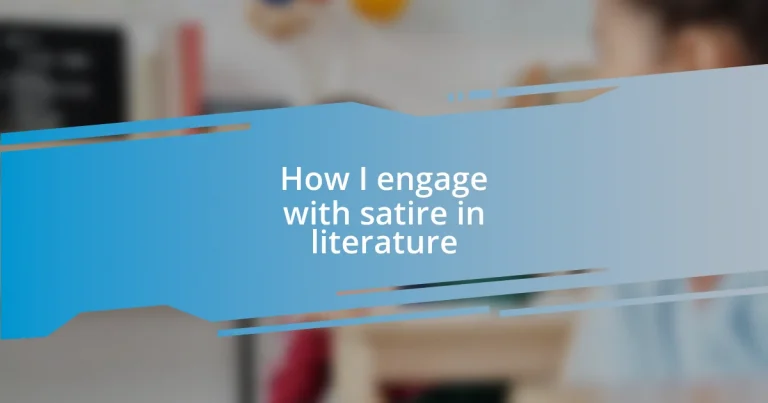Key takeaways:
- Satire effectively combines humor with societal critique, provoking thought and emotional responses, as seen in works like “Animal Farm” and “A Modest Proposal.”
- Different types of satire—parody, irony, and exaggeration—serve to highlight flaws, contrast realities, and amplify absurdities, enhancing the narrative’s impact.
- Identifying themes such as power critique, absurdity of societal norms, and disillusionment enriches the reader’s understanding and connection to the complexities of life and humor.
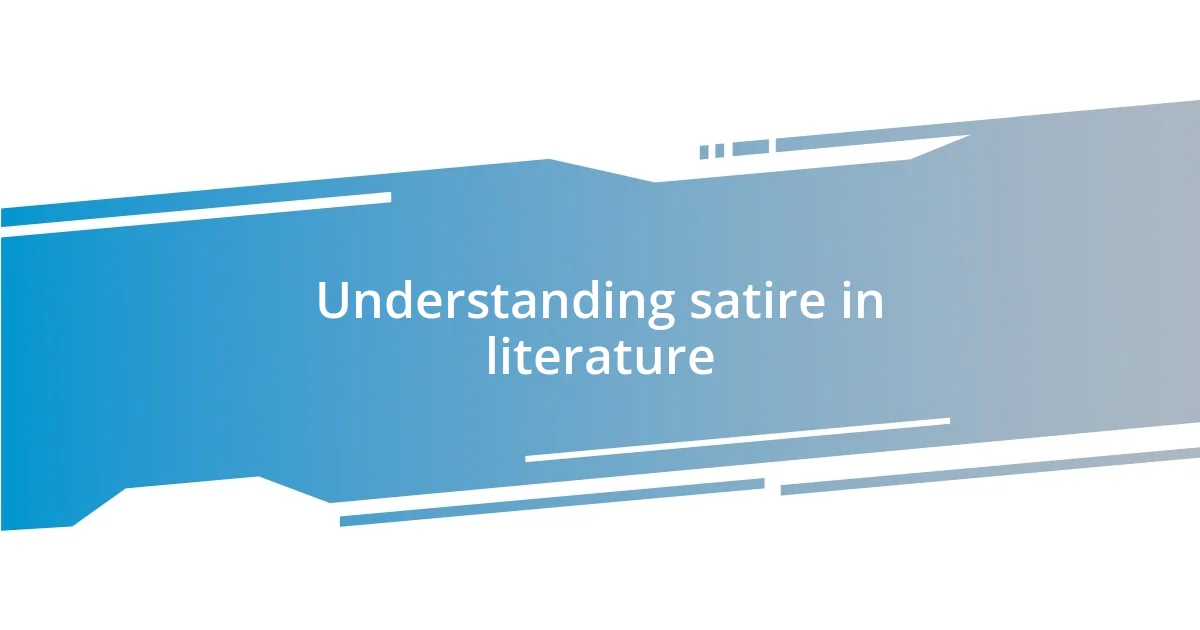
Understanding satire in literature
Satire in literature is a powerful tool that often combines humor and critique to challenge societal norms or highlight absurdity. I remember the first time I read “Animal Farm” by George Orwell; it struck me how cleverly he used farm animals to reveal the complexities of political systems. Doesn’t it make you wonder how a simple story can reflect such deep truths about human behavior?
When I engage with satire, I find myself contemplating not just the humor but its underlying message. For instance, the biting wit of Jonathan Swift in “A Modest Proposal” still resonates with me. It’s hard to digest at first, but I appreciate how satire can provoke strong emotions and foster critical thinking. Have you ever laughed at something, only to discover the pain hidden beneath the humor?
What really fascinates me is how satire can push boundaries and encourage reflection on uncomfortable topics. I often think about how modern satirical works, like “The Onion” or shows like “Saturday Night Live,” challenge our perceptions of current events. They force us to rethink our beliefs, doesn’t that make you consider the role humor plays in our understanding of the world?
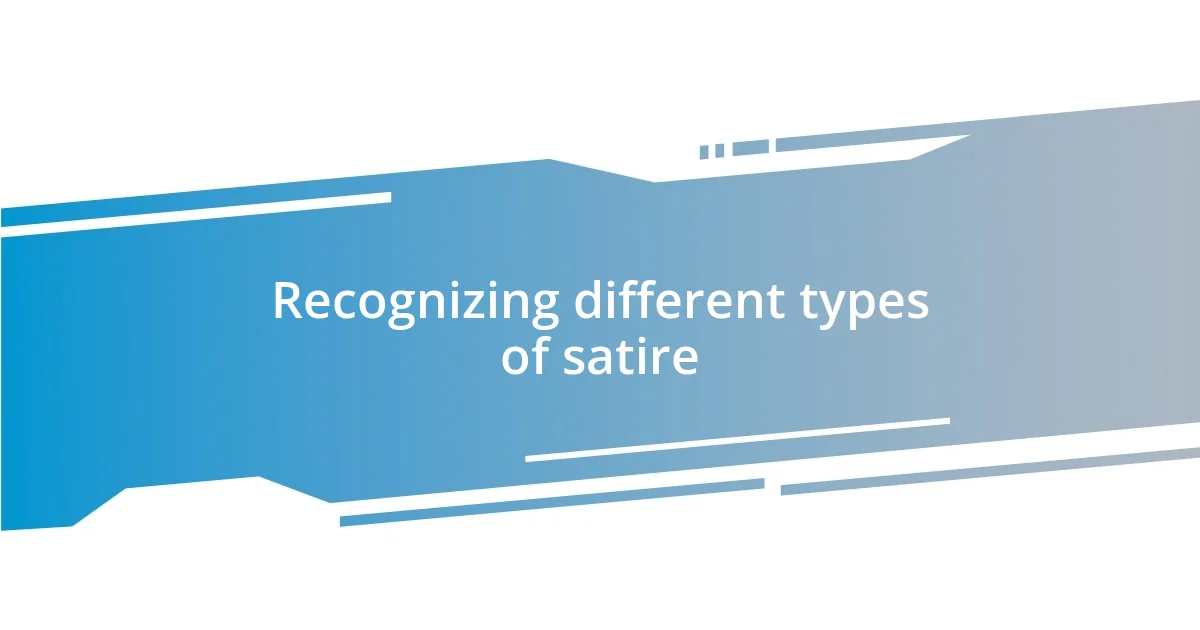
Recognizing different types of satire
Recognizing different types of satire can truly enhance our understanding of the narratives at play. For instance, I personally find it intriguing how parody mimics the style of its subject to highlight its flaws. When I first encountered “Don Quixote” by Miguel de Cervantes, I was struck by how the exaggerated portrayal of a chivalrous knight satirized the absurdities of romantic ideals. Have you ever read something that made you laugh while simultaneously prompting you to question societal norms?
On the other hand, there’s irony, which often leaves us pondering the contrasts between appearance and reality. I remember reading “Gulliver’s Travels” by Jonathan Swift and being fascinated by how the seemingly innocent travel adventures had a sharp critique of political and social structures. It’s like a light bulb moment when the humor intertwines with deep social commentary, isn’t it? It’s quite powerful how such narratives can challenge our perceptions and encourage introspection.
Lastly, the use of exaggeration, or hyperbole, stands out as a common technique in satire. I recently read a contemporary satire that took current trends and twisted them to hilarious extremes. It made me realize that sometimes, the most outrageous portrayals reflect our own absurdities. Isn’t it interesting how humor, when amplified, can serve as a mirror to our reality and push us to reflect deeply on ourselves and the world?
| Type of Satire | Description |
|---|---|
| Parody | Imitates a specific style to expose flaws. |
| Irony | Contrasts appearance with reality, provoking thought. |
| Exaggeration | Amplifies characteristics to highlight absurdity. |
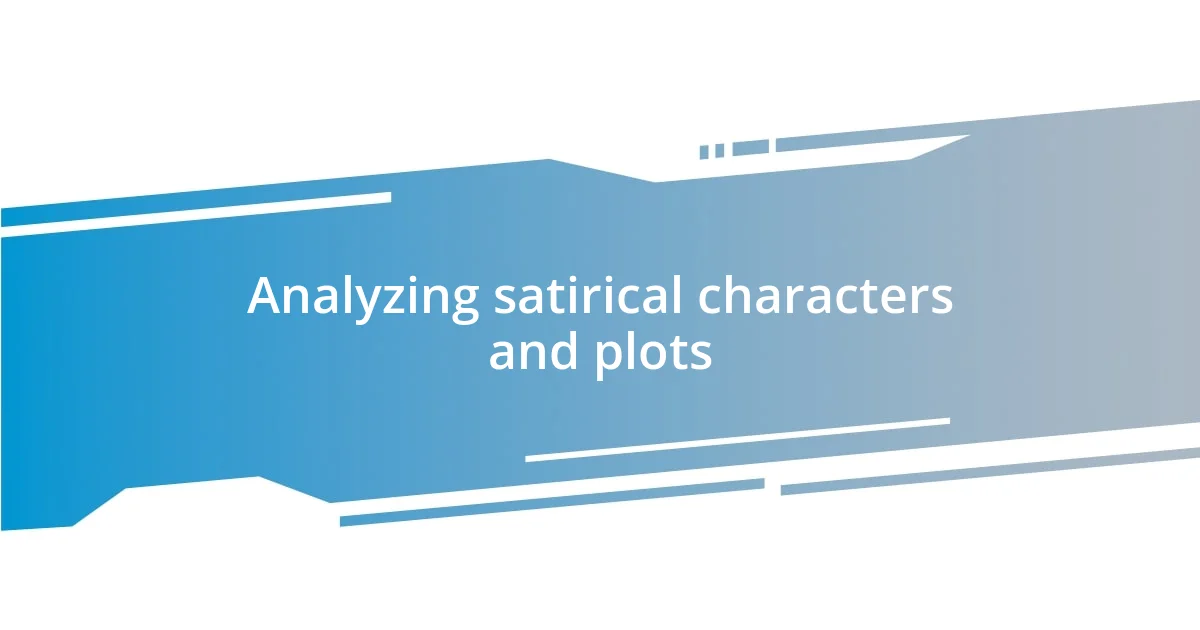
Analyzing satirical characters and plots
When I analyze satirical characters, I find that they often serve as larger-than-life representations of societal flaws. Take, for example, the Duke from “The Importance of Being Earnest” by Oscar Wilde; his ridiculous decisions and pretentiousness make me both laugh and cringe. It’s fascinating how these outlandish traits shine a light on the foolishness of societal expectations, isn’t it? I recall laughing out loud at his absurdity, yet later I reflected on my own encounters with similar pretensions in everyday life.
Additionally, the plots in satirical works frequently weave together humor and serious critique in unexpected ways. I once read “Catch-22” by Joseph Heller, and the chaotic events felt like a whirlwind. The absurd circular logic encapsulated in the idea of “Catch-22” is a brilliant portrayal of bureaucratic ineptitude, which left me both amused and angry at the same time. This emotional juxtaposition is what makes satirical plots so compelling—they hold a mirror to reality while inviting us to laugh at the very fabric of our society.
- Satirical characters often exaggerate flaws to provoke reflection and criticism.
- Plot devices are crafted to intertwine humor with serious societal critique.
- The emotional resonance in satire can prompt laughter as well as introspection.
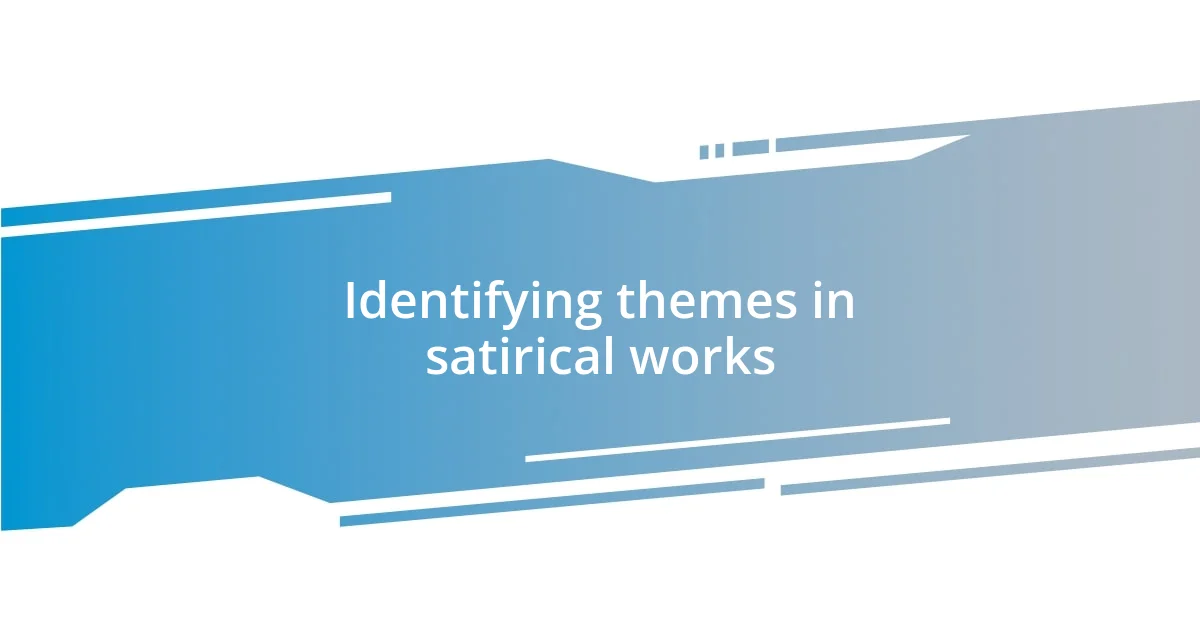
Identifying themes in satirical works
Identifying themes in satirical works can truly enrich our reading experience. For instance, I often notice that a prevalent theme is the critique of power and authority. When I read “Animal Farm” by George Orwell, I was struck by how the allegorical tale exposed the corrupting nature of power. I found myself reflecting on real-world politics and wondering, how often do we see leaders abandon their original intentions for personal gain?
Another recurring theme I encounter is the absurdity of societal norms. In “Brave New World” by Aldous Huxley, the exaggerated societal behaviors made me both laugh and feel a twinge of discomfort. It made me think about the norms in my own life—what rituals do I engage in that might seem ridiculous if viewed from an outsider’s perspective? I always appreciate how satire holds a funhouse mirror to our culture, forcing me to reconsider my relationships and values.
Finally, there’s often an element of disillusionment present in these works. I vividly remember the mix of humor and sadness in “The Hitchhiker’s Guide to the Galaxy” by Douglas Adams. The chaos and randomness portrayed in the universe sparked a realization in me: life can sometimes feel equally chaotic and absurd. Isn’t it comforting, then, that humor can be a coping mechanism for grappling with such complexities? In these ways, identifying themes in satire not only enhances our understanding but also deepens our connection to the intricate dance between humor and reality.
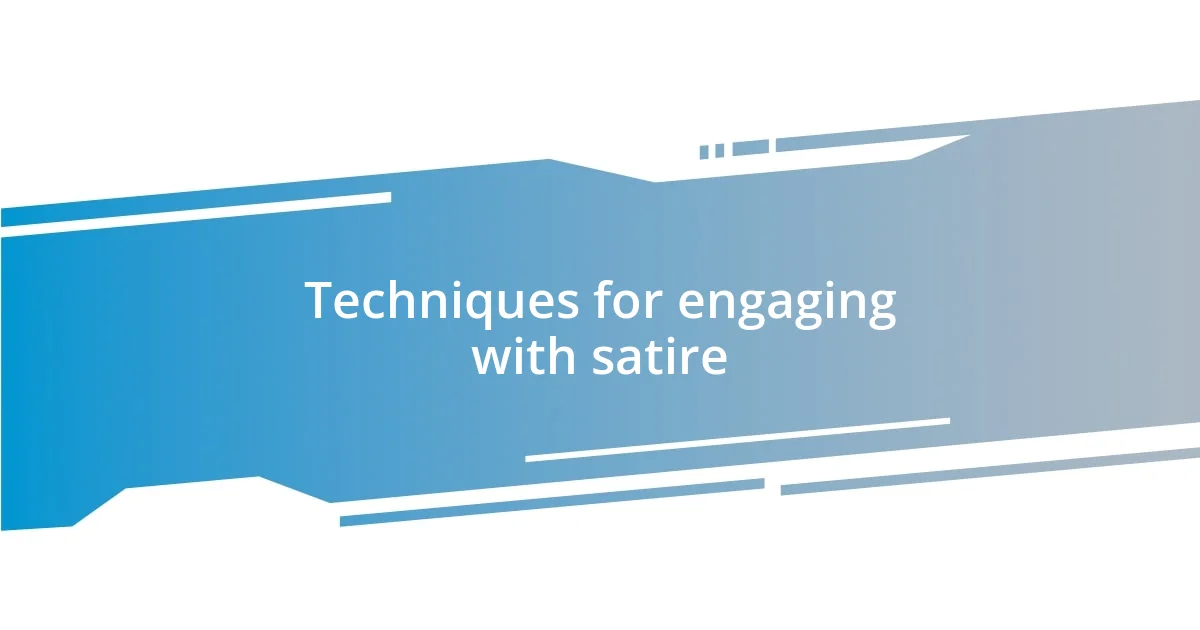
Techniques for engaging with satire
When I engage with satire, one effective technique is to pay close attention to hyperbole. I’ve noticed that exaggerated statements can lay bare the ridiculousness of a situation. For instance, in watching the animated show “The Simpsons,” I’m often taken aback by how the characters amplify social issues, making me chuckle while simultaneously prompting a deeper contemplation of the real-world implications. It’s almost like a lighthearted poke at reality—how can something so outrageous also feel so familiar?
Analyzing irony is another technique I find invaluable. It’s fascinating how things aren’t always what they seem, especially in satirical works. I remember reading “The Onion” and getting swept away in their cleverly crafted news articles that mirror actual events, yet twist them into absurdity. This blend of reality and exaggeration forced me to consider, “What truths are we often reluctant to confront?” It’s an eye-opening experience that can deepen my understanding of societal absurdities through humor.
Lastly, engaging with satire often calls for a playful mindset. I make it a habit to approach these narratives with curiosity. For example, after watching the film “Dr. Strangelove,” I found myself not just laughing but also dissecting the absurdity of nuclear war politics. I thought, “How can such a grave topic be portrayed so humorously?” This allows me to appreciate the layers of meaning and ask questions that challenge my views, turning satire into a rich opportunity for introspection and growth.












